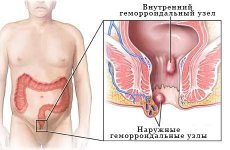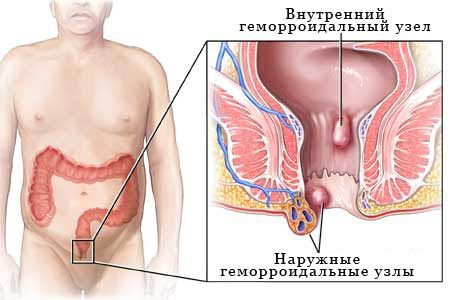Medical expert of the article
New publications
What are hemorrhoids?
Last reviewed: 07.07.2025

All iLive content is medically reviewed or fact checked to ensure as much factual accuracy as possible.
We have strict sourcing guidelines and only link to reputable media sites, academic research institutions and, whenever possible, medically peer reviewed studies. Note that the numbers in parentheses ([1], [2], etc.) are clickable links to these studies.
If you feel that any of our content is inaccurate, out-of-date, or otherwise questionable, please select it and press Ctrl + Enter.

Although most people think that hemorrhoids are abnormal, they can bother every person. It is a phenomenon when the hemorrhoidal cavernous bodies are enlarged and filled with blood, and then there is pain in the anal area. Then hemorrhoids can cause problems and be considered an abnormal condition or disease.

Definition of hemorrhoids
There is no exact definition of hemorrhoids, but they can be described as masses or tufts of "pillow" tissue, grapes, peas in the anal canal area, which contains blood vessels and the supporting muscles that surround them. There is a section of the anal canal - the last four centimeters - through which stool passes from the rectum. The anus is the open anal canal from the human body to the outside world.
Prevalence of hemorrhoids
Although hemorrhoids are present in a latent form in every person until the cones become large, hemorrhoids can cause problems in 4% of the general population. Hemorrhoids cause health problems equally in men and women. Its prevalence peaks between 45 and 65 years.
Factors that increase the risk of developing hemorrhoids
- Persistent constipation or diarrhea. These symptoms may cause straining during bowel movements.
- Overweight
- A family history of hemorrhoids. You may inherit the condition.
- Age 50 or older: Half of people over 50 seek treatment for hemorrhoids.
- Pregnancy. When the fetus grows during the last 6 months of pregnancy, the blood increases pressure on the pelvic organs, blood vessels, and increases the risk of hemorrhoidal cones.
- Strenuous work can also cause hemorrhoids, which will get worse over time unless you change your lifting habits.
- Liver disease, heart disease, leg disease, or all of these conditions combined. These conditions can lead to blood lumps in the anus.
Factors that can worsen the course of hemorrhoids
Hemorrhoids may worsen under the following circumstances:
Circumstances associated with hemorrhoids
Need help with pain, itching, hemorrhoids? Better yet, what would you like to do to prevent the pain from breaking out in the first place? About 10 million people in the U.S. alone suffer from hemorrhoids, which are swollen veins in the rectum or around the anus.
Hemorrhoids can be internal or external. External hemorrhoids are more likely to cause symptoms, pain, and itching when the anus is irritated. Internal hemorrhoids are usually painless, but can cause bleeding. Hemorrhoids can cause bright red rectal bleeding, but if you are bleeding, we will assume...
Sitting or standing for a long time. This can cause blood to accumulate in the anal area and increase pressure on the veins. Frequent, heavy breath holding while lifting heavy objects. This can cause a sharp increase in pressure in the blood vessels and hemorrhoidal cones.
Who suffers most from hemorrhoids?
Hemorrhoids are a very common problem. Equal numbers of men and women suffer from hemorrhoids.
Hemorrhoids can occur at any age, but they are more common after age 30. About half of people over age 50 have symptoms of hemorrhoids.
Many women suffer from hemorrhoids during the last 6 months of pregnancy and immediately after childbirth.
Did you know that...
Hemorrhoids are one of the most common diseases known to mankind. More than half of the population develops hemorrhoids, usually after the age of 30. Millions of people currently suffer from hemorrhoids.
The average person suffers silently from hemorrhoids for a long period before seeking medical attention.
Today, many treatments make certain types of hemorrhoids much less painful to remove.
Anatomy of hemorrhoids
The arteries that supply blood to the anal canal come from the rectal canal and above, forming a rich network of arteries that communicate with each other around the anal canal. Because of this rich network of arteries, the hemorrhoidal blood vessels are primed to supply arterial blood. This explains why bleeding from hemorrhoids is bright red (arterial) rather than dark red (venous blood), and why bleeding from hemorrhoids can sometimes be a very serious symptom. The blood vessels that supply the hemorrhoidal vessels pass through the tissue of the hemorrhoidal corpora cavernosa.
The anal veins provide blood drainage from the anal canal. These veins run in two directions. The first direction is upwards into the rectum, and the second is downwards under the skin around the anus. The dentate line is a line in the anal canal area that marks the transition from the anal skin (anoderm) to the rectal mucosa.
 [ 12 ], [ 13 ], [ 14 ], [ 15 ], [ 16 ], [ 17 ]
[ 12 ], [ 13 ], [ 14 ], [ 15 ], [ 16 ], [ 17 ]
Formation of hemorrhoids
If the hemorrhoids occur on the rectal side of the anal canal, they are internal hemorrhoids. If they occur in the lower part of the anal canal near the anus, they are called external hemorrhoids. Technically, the distinction between internal and external hemorrhoids is based on whether the hemorrhoidal bumps form above or below the dentate lines (internal and external, respectively).
As discussed earlier, hemorrhoidal bumps in the upper anal canal are made up of blood vessels and supporting muscle tissue. There are usually three main hemorrhoidal cushions oriented as right posterior, right anterior, left lateral. When an enlarged internal hemorrhoid forms, the vessels of the anal cushions become distended and the supporting tissues become larger.
Parts of tissue and blood vessels protrude from the anal canal, which may be the cause of the problem. Unlike internal hemorrhoids, it is not clear how external hemorrhoids form.
How to visually identify hemorrhoids
Internal hemorrhoids are clumps of tissue in the anal canal that contain blood vessels, muscles, and elastic fibers. External hemorrhoids are when the blood vessels around the anus become dilated.
Internal hemorrhoids can cause problems when the lumps enlarge. The cause of the enlargement is often unknown.
Complications of hemorrhoids include bleeding, anal itching, rectal prolapse, constipation, and gangrene. There may be no pain.
The main complication of external hemorrhoids is pain due to blood clotting in the hemorrhoidal blood vessels.
When dealing with hemorrhoids, it is important to rule out other conditions of the anus and rectum that can cause similar symptoms, such as polyps, cancer, and skin conditions.
Treatments for hemorrhoids include over-the-counter and prescription topical medications, sclerotherapy, rubber band ligation, heat, coagulation, cryotherapy, anal stretching, tubal Doppler, and surgical interventions.
Radical treatment of hemorrhoids involves hemorrhoidectomy (excision of hemorrhoids).
Bowel movements, physical stress, and other factors can increase your risk of developing hemorrhoids or make existing hemorrhoids worse. Some of these factors can be prevented.

